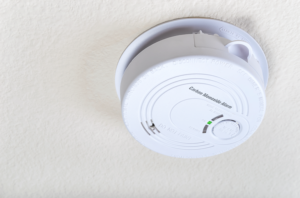Perform a Carbon Monoxide Detector Check
To look at a typical carbon monoxide detector, it isn’t very impressive. However, carbon monoxide detectors can literally mean the difference between life and death for you and your family.
The Dangers of Carbon Monoxide
Carbon monoxide (CO) is produced when flammable materials, such as natural gas in your furnace, is burned. CO is odorless, tasteless, and colorless, which means you can’t tell when it is present using your own senses. Carbon monoxide is also highly toxic. Exposure to it can cause carbon monoxide poisoning, which can harm your health and, in extreme cases, cause death.
This gas is usually vented out of your home, but a problem with the furnace or the ventilation system could cause the CO to leak into your indoor living spaces. The carbon monoxide detectors in your home are able to sense the presence of this gas and alert you with an alarm, giving you enough time to get out of your house and call for help
Checking Your Carbon Monoxide Detectors
Here is a useful three-step process for checking your carbon monoxide detectors.
- Inspect the unit: Carefully check the unit for damage, missing pieces, dirt, and debris. Make sure the cover is in place and that the unit is tightly attached to the wall or ceiling.
- Test the unit: Each CO detector should have a test button on the unit’s face. Press this button until the alarm sounds. If the alarm doesn’t go off, change the batteries and try again. If the alarm still doesn’t sound, replace the entire unit with a new one.
- Put in fresh batteries: It may be a good idea to put in new batteries even if the detector passed the test. This will reduce the possibility of failure in the middle of heating season when you need the detector the most.
With more than three decades of professional experience in the HVAC industry, NisAir Air Conditioning and Heating serves customers in Martin County, Palm Beach County, and Indian River County. Contact us today for more information on carbon monoxide detectors and how to make sure yours is working correctly.

